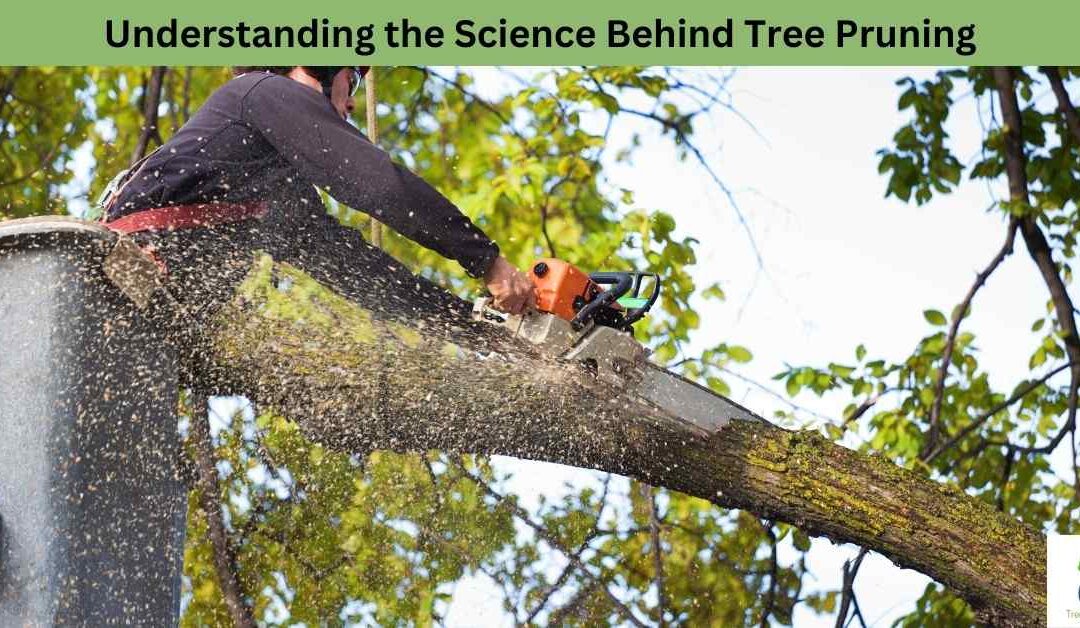Tree pruning is more than just snipping away at branches. It’s a delicate balance of art and science, a practice deeply rooted in understanding tree biology and growth patterns. To truly grasp the essence of tree pruning, one must delve into the science behind it.
The Biology of Trees: How They Grow
Trees are remarkable organisms with a complex structure designed for optimal growth and survival. Understanding their growth patterns is fundamental to effective pruning:
- Apical Dominance: Trees have a central leader or main stem that dictates growth. Pruning this central leader influences the tree’s shape and height.
- Branch Collar and Bark Ridge: The branch collar is a swollen area at the base of a branch, while the bark ridge is a raised section of bark where the branch meets the trunk. Proper pruning cuts should be made just outside the branch collar without damaging the ridge.
- Vascular System: Trees have a vascular system responsible for transporting water, nutrients, and sugars. Pruning cuts can affect this system, so proper technique is crucial to minimize damage.
Goals of Tree Pruning
Tree pruning serves various purposes, each with its scientific reasoning:
- Health: Removing diseased, dead, or crossing branches promotes tree health by reducing the risk of infection and improving airflow and sunlight penetration.
- Structure: Pruning influences the tree’s growth pattern, directing its growth for better form and structural integrity.
- Safety: Eliminating weak or hazardous branches minimizes the risk of breakage or falling limbs, ensuring safety for people and property.
Pruning Techniques and Timing
Different pruning techniques and timing play a significant role in tree health and growth:
- Thinning: Removing select branches to improve light penetration and airflow within the canopy. This technique reduces the tree’s density without altering its overall shape drastically.
- Heading Back: Pruning the tips of branches to encourage bushier growth. Used selectively, it can stimulate new growth in desired areas.
- Seasonal Timing: Pruning at the right time, depending on the species and its specific growth patterns, is crucial. For instance, some trees are best pruned in dormant winter months to minimize stress, while others benefit from pruning after flowering in spring.
Tools and Techniques for Pruning
Using the right tools and applying proper techniques are imperative for successful pruning:
- Tools: Pruning shears, loppers, pruning saws, and pole pruners are common tools. Each serves a specific purpose and ensures clean, precise cuts.
- Pruning Cuts: Cutting at the correct angle just beyond the branch collar or bark ridge helps the tree heal efficiently and prevents diseases or decay.
- Sanitation: Cleaning tools between cuts and between trees helps prevent the spread of diseases.
Consulting Professionals for Pruning Needs
While understanding the science behind tree pruning is valuable, it’s also essential to recognize when professional help is necessary:
- Complex Situations: Large trees, proximity to power lines, or difficult-to-reach branches often require the expertise of certified arborists.
- Species-Specific Knowledge: Certain tree species may have unique growth patterns or specific pruning requirements that demand professional insight.
- Optimal Results: Professionals have the knowledge, experience, and tools to execute precise and beneficial pruning while ensuring the tree’s health and longevity.
Conclusion
Tree pruning is a nuanced practice grounded in scientific principles. Appreciating the biological intricacies of trees and understanding their growth patterns is key to effective pruning. By employing the right techniques, tools, and timing, one can enhance tree health, structure, and safety.
While basic pruning can often be performed by homeowners, seeking guidance from certified arborists for more complex or large-scale pruning ensures optimal results and preserves the well-being of your trees. With a blend of scientific knowledge and practical application, tree pruning becomes not just a task, but an artful technique that promotes the vitality and beauty of your landscape.
If you are in Clyde North, Victoria 3978, and looking for a tree pruning service, this is the best way to visit us.
Casey Tree Removal
27 William Rd
Berwick VIC 3806


Recent Comments